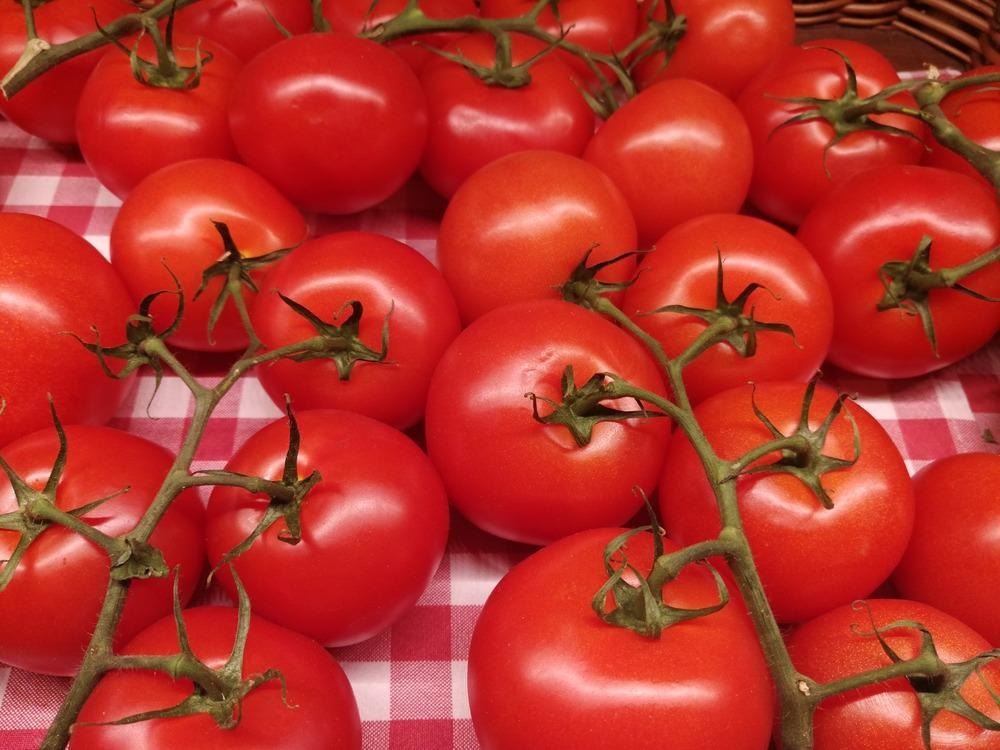Flavonoids enhance the functional and nutritional qualities of fruits. A recent study published in the journal Nanomaterials focuses on synthesizing a novel triiron tetrairon phosphate (Fe7(PO4)6) nanomaterial for increased flavonoid accumulation in tomato fruits.

Study: Triiron Tetrairon Phosphate (Fe7(PO4)6) Nanomaterials Enhanced Flavonoid Accumulation in Tomato Fruits. Image Credit: C4289N/Shutterstock.com
Why are Flavonoids Important?
Bioactive components such as flavonoids have excellent anti-inflammatory properties and help protect cells from free radicals that can cause serious diseases. When included in food, these antioxidants can help in the prevention of heart disease, diabetes, lymphoma, and neurological illnesses such as Alzheimer's and memory loss.
There has been considerable attention to the possible health advantages of flavonoids linked with fruit and vegetable-rich diets in recent years.
Additionally, flavonoids have significant biological activity, including excellent skin protection from ultraviolet radiation, capillary development, radiation shielding, and moisturizing, softening, and healing of human skin. Therefore, flavonoids can be employed as cosmetic ingredients and medicinal goods due to their qualities.
Lack of Flavonoids in Human Diet
However, due to unsatisfactory eating patterns, poor absorption, fast digestion, and quick elimination, overall consumption of flavonoids in the human diet have remained low. Certain essential flavonoids are present only in trace amounts (<10 mg/kg) in foods such as broccoli, greens, beets, peas, fungi, and brewed coffee. Other fruits and vegetables, such as spinach, soybeans, red pepper, tomatoes, raisins, cherries, red wine, and tea, contain no more than 50 mg of flavonoids per kilogram.
As a result, there is growing interest in generating flavonoid-rich replacement foods. Tomatoes, which include a broad range of packaged tomato food items, are a significant source of flavonoids in the human diet and hence a good choice for increased flavonoids consumption.
Use of Nanomaterials for Enhancement of Flavonoid Accumulation
The food sector has been revolutionized by nanotechnology, primarily in the development of cleaner, healthier, and high-quality functional ingredients. Flavonoids have poor bioavailability generally and may vary significantly across flavonoid categories and specific molecules within a group. Therefore, attempts are being undertaken to increase flavonoids' absorption.
Previous studies found that the concentration of flavonoids in plants may be improved with the use of nanomaterials (NMs). For instance, 10 mg/L Se and Cu NMs dramatically increased the flavonoid content in tomato fruits. Additionally, the treatment of 250 mg/L SiO2 NMs raised the flavonoids content of tomato fruits substantially.
Given these encouraging results and the well-established relevance of flavonoids in tomato fruits, more research into the signaling pathways and performance modification of flavonoids are necessary.
The plasma membrane supports the transportation of different minerals such as nitrates, phosphate, and potassium and is also responsible for removing protons from the plasma to facilitate acidification.
The current work focuses on creating a new triiron tetrairon phosphate (Fe7(PO4)6) nanomaterial in the soil to stimulate plasma membrane activation. This aids in the absorption of nutrients and promotes photosynthesis, resulting in an increase in sucrose accumulation and the promotion of flavonoids production in tomato fruits.
Important Findings of the Study
The researchers discovered that following treatment with the developed (Fe7(PO4)6) nanomaterial, flavonoid deposition in tomato seedling roots increased sharply, as did the bioactivity of the plasma membrane. The intake of nutritional elements was increased, which increased photosynthesis. Indirectly, the buildup of sucrose in fruit treated with Fe7(PO4)6 NMs increased flavonoid biosynthesis precursors.
Iron (Fe) is involved in the electrochemical process and is a necessary element of all living organisms, particularly plants. Manganese (Mn) is a critical ingredient in the photosynthesis process since it is essential for the oxidation reaction. Magnesium (Mg) is a cofactor for several proteins involved in photosynthesis, carbon storage, and digestion. Thus, the increased concentrations of Fe, Mn, and Mg in tomato plants treated with the (Fe7(PO4)6) nanomaterial significantly enhanced photosynthesis, increasing flavonoid accumulation.
Future Perspective
The purpose of this work was to produce a new nanomaterial capable of increasing the bioavailability of a critical dietary component called flavonoid. This study demonstrates how nanomaterials can improve human health by increasing flavonoid concentration in dietetic fruit and vegetables. Additionally, the methods used in this research effort might pave the way for the future growth of advanced nano-enabled agricultural production.
Reference
Wang, Z. et al. (2022). Triiron Tetrairon Phosphate (Fe7(PO4)6) Nanomaterials Enhanced Flavonoid Accumulation in Tomato Fruits. Nanomaterials. Available at: https://www.mdpi.com/2079-4991/12/8/1341/htm
Disclaimer: The views expressed here are those of the author expressed in their private capacity and do not necessarily represent the views of AZoM.com Limited T/A AZoNetwork the owner and operator of this website. This disclaimer forms part of the Terms and conditions of use of this website.